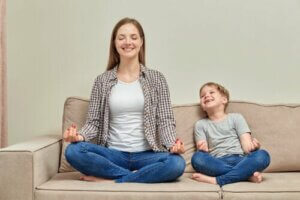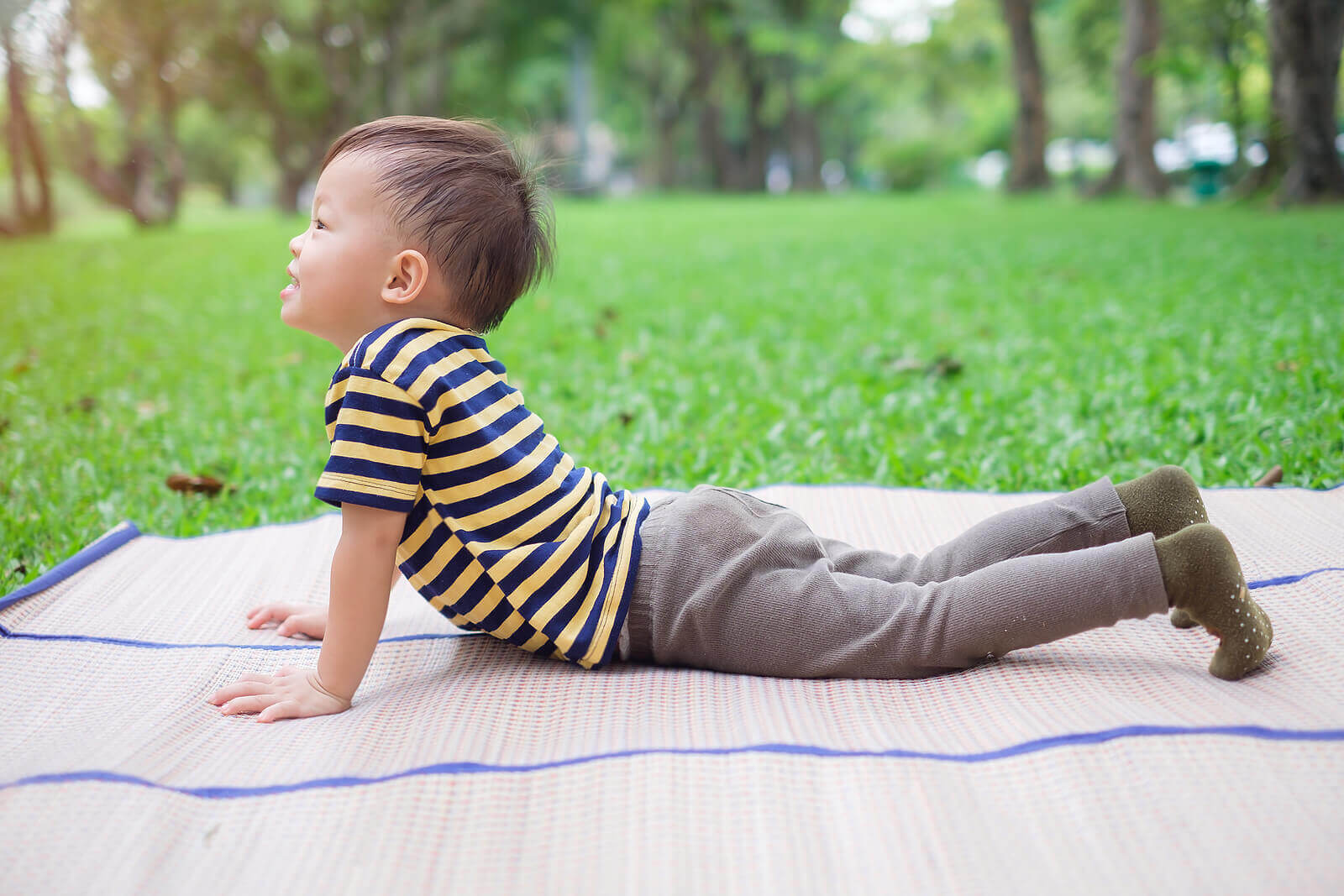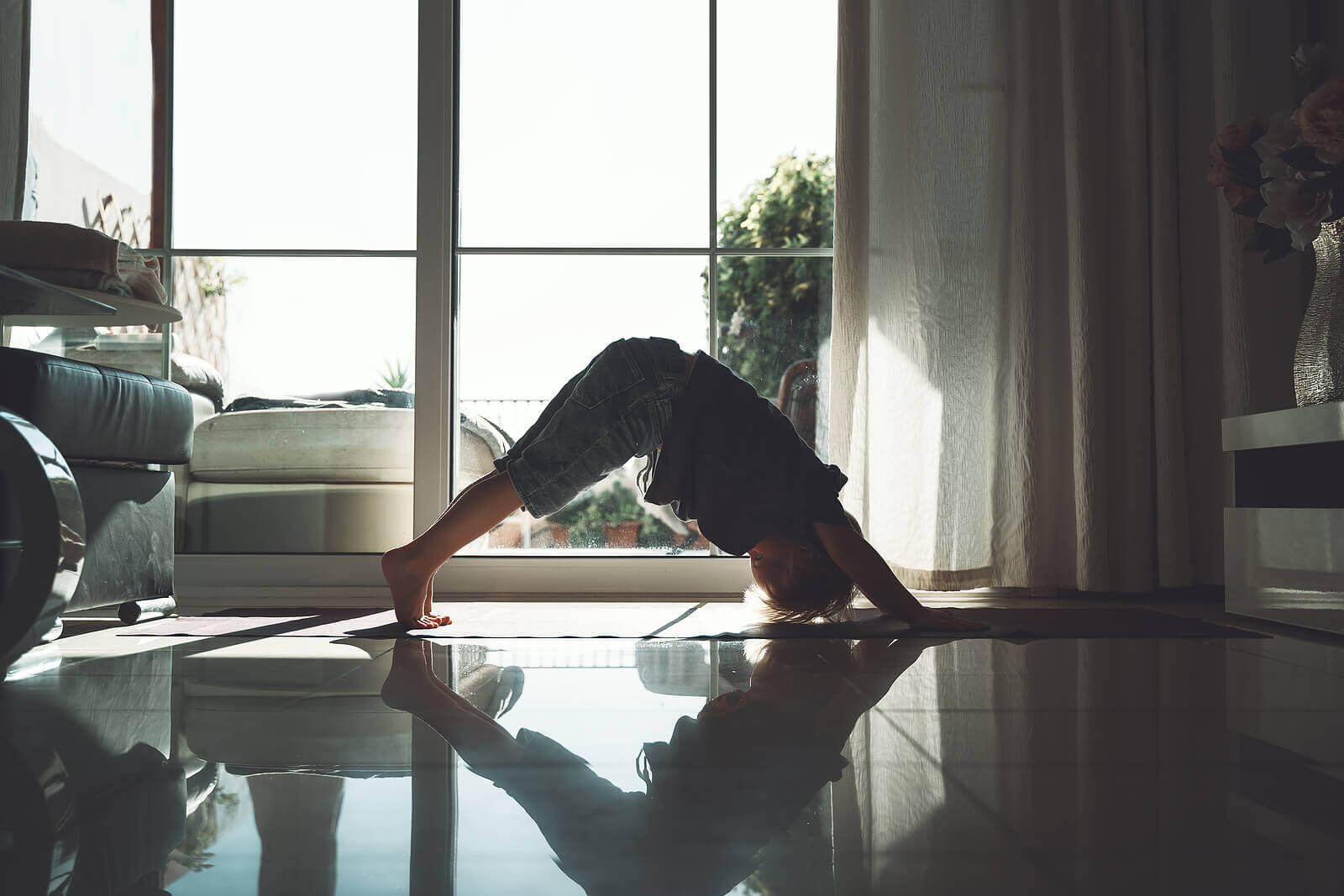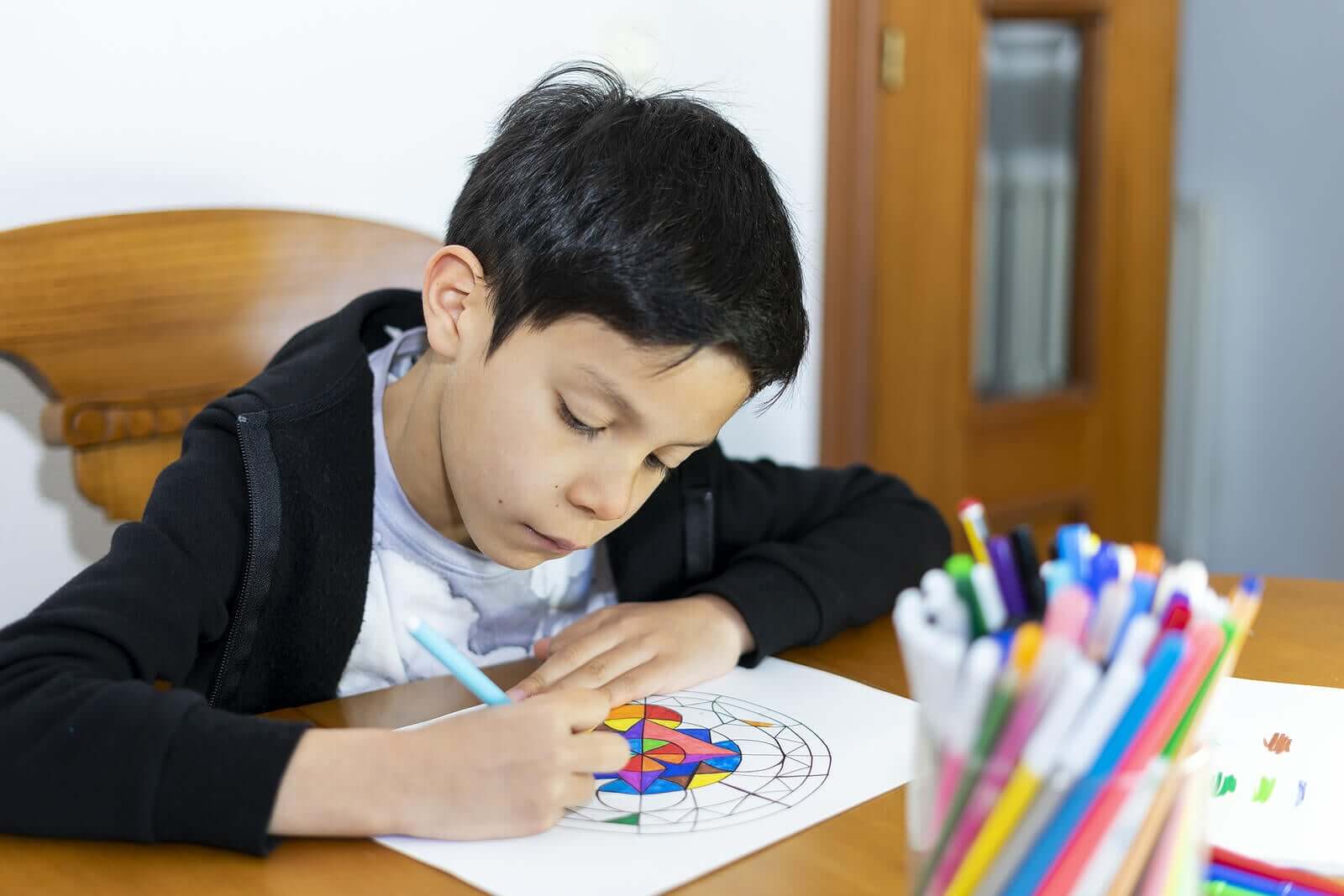The Best Relaxation Techniques for Children, According to Age

Both parents and children need to relax. The pace of life in the society we live in makes it essential that we take some time for our own well-being. Children can often feel nervous and restless, whether that be out of anger or frustration, and they need to learn how to relax. Below, we’ll look at some relaxation techniques for children according to different age groups.
You yourself may have practiced some of the techniques listed here, but it’s always good to have some methods on hand to help your child relax, whatever their age.
Benefits of using age-dependent relaxation techniques
Relaxation isn’t only good for adults; it’s also good for children. The fact that we can use different relaxation techniques adapted to a child’s age will make this task easier.
Let’s look at some benefits of using these techniques:
- Decreases anxiety levels
- Stops stuttering
- Prevents asthma attacks
- Improves sleep quality and helps with sleep problems
- Increases learning capacity
- Decreases frequency of nervous tics
- Improves concentration and memory
- Improves overall well-being
- Reduces muscle tension
- Helps control emotions, especially in cases where children have outbursts of anger and aggression
Best relaxation techniques for children
Every parent has had to struggle with a child who is angry, frustrated or tired. Maybe your child has also been nervous about having to do some sort of presentation or exam at school.
As a mother and psychologist, what I recommend most is to make use of relaxation techniques to fight stress. Both parents and children can get involved in them at the same time.
At home, I use them with my son quite often. We do them together, and it’s another way of spending quality time with him. Let’s see which exercises are best, according to the child’s age.
For infants from 0 to 3 years old
At this age, children can’t participate so much, and so we’ll use techniques that parents can use to help them relax.

Shantala massage
This technique consists of stimulating, relaxing and helping children to sleep through touch. It’s important to do these massages when the baby is calmer, and not in the middle of a tantrum. We can help ourselves with soft, calm music, dim light, and a proper room temperature.
Massages are focused on the feet, legs, stomach, back, chest, arms and hands. Online we can surely find some examples of how to carry out this massage.
Calm-down jars
We can start using this method when the tantrums start, at around the age of two. We can create a calm-down jar so that, when you shake it, the glitter moves and goes all over the place. The idea is that, as the glitter falls, the child begins to relax.
For children from 3 to 7 years old
At this stage, the children’s participation is more active than in the previous one.
Turtle technique
Here the child has to imagine that they’re a turtle. First you’ll have to place them face down on their tummy. Then you need to tell them that the sun has gone down and that the little turtle has to go to sleep.
You should then move their arms and legs inwards, until they’re under their tummy, and their back will be the “shell.” After this, tell them it’s almost dawn, and they can come out again the same way they went in.
Ant technique
This is similar to the previous one. The only difference is they have to imagine that they’re an ant, trying to become as small as they can. While they’re “transforming,” tell them to relax their muscles.
The balloon technique
Here the child has to imagine that they’re a balloon. Tell them to breathe in deeply, filling their lungs, and then exhale very slowly. Get them to repeat it several times. This technique is very effective for children with ADHD problems.
It’s important that, while they perform these activities, they control their breathing, enabling them to calm down and relax their muscles.

More relaxation methods for children according to age
For children from 7 to 9 years old
These children already have better autonomy, and they can use some slightly more complex methods.
Rag doll
First, ask the child to tense their muscles and move like a robot. After a minute of being a robot, ask them to imagine they’re a rag doll, letting their arms, legs and chest relax. When they’ve done that, take hold of their arms and move them along as if they were made of rags.
Mindfulness
This technique can be accompanied by music. You can guide the activity yourself or, alternatively, use any audio you find on meditation. It’s important for adults to accompany their children in this activity. To do this, you should keep quiet and pay attention to everything that happens around you.
Painting mandalas

This method is becoming increasingly popular with both children and adults. It’s a very relaxing activity that frees the mind from any negative thoughts. Painting mandalas can help develop patience and lower anxiety levels.
For children ages 9-12
At these ages you can use any technique that helps your child to relax, and we recommend doing it in any situation where the child is feeling nervous, such as an exam. One of the methods we can use is Jacobson’s progressive muscle relaxation. In addition, if children practice it frequently, it’ll be very easy for them to perform it whenever needed.
This consists of tensing different parts of the body for 10 seconds and then relaxing them gently. Get them to take a deep breath for a few seconds and then exhale slowly.
So, here are some relaxation methods for children divided into age groups. They’re sure to be of help to you in situations where both you and your children need to relax.
We live in stressful times and the pace of life is sometimes relentless. Because of that, we must know how to slow down a little – it’ll really benefit our well-being and our children’s.
So, what are you waiting for to put all these techniques into action?
Both parents and children need to relax. The pace of life in the society we live in makes it essential that we take some time for our own well-being. Children can often feel nervous and restless, whether that be out of anger or frustration, and they need to learn how to relax. Below, we’ll look at some relaxation techniques for children according to different age groups.
You yourself may have practiced some of the techniques listed here, but it’s always good to have some methods on hand to help your child relax, whatever their age.
Benefits of using age-dependent relaxation techniques
Relaxation isn’t only good for adults; it’s also good for children. The fact that we can use different relaxation techniques adapted to a child’s age will make this task easier.
Let’s look at some benefits of using these techniques:
- Decreases anxiety levels
- Stops stuttering
- Prevents asthma attacks
- Improves sleep quality and helps with sleep problems
- Increases learning capacity
- Decreases frequency of nervous tics
- Improves concentration and memory
- Improves overall well-being
- Reduces muscle tension
- Helps control emotions, especially in cases where children have outbursts of anger and aggression
Best relaxation techniques for children
Every parent has had to struggle with a child who is angry, frustrated or tired. Maybe your child has also been nervous about having to do some sort of presentation or exam at school.
As a mother and psychologist, what I recommend most is to make use of relaxation techniques to fight stress. Both parents and children can get involved in them at the same time.
At home, I use them with my son quite often. We do them together, and it’s another way of spending quality time with him. Let’s see which exercises are best, according to the child’s age.
For infants from 0 to 3 years old
At this age, children can’t participate so much, and so we’ll use techniques that parents can use to help them relax.

Shantala massage
This technique consists of stimulating, relaxing and helping children to sleep through touch. It’s important to do these massages when the baby is calmer, and not in the middle of a tantrum. We can help ourselves with soft, calm music, dim light, and a proper room temperature.
Massages are focused on the feet, legs, stomach, back, chest, arms and hands. Online we can surely find some examples of how to carry out this massage.
Calm-down jars
We can start using this method when the tantrums start, at around the age of two. We can create a calm-down jar so that, when you shake it, the glitter moves and goes all over the place. The idea is that, as the glitter falls, the child begins to relax.
For children from 3 to 7 years old
At this stage, the children’s participation is more active than in the previous one.
Turtle technique
Here the child has to imagine that they’re a turtle. First you’ll have to place them face down on their tummy. Then you need to tell them that the sun has gone down and that the little turtle has to go to sleep.
You should then move their arms and legs inwards, until they’re under their tummy, and their back will be the “shell.” After this, tell them it’s almost dawn, and they can come out again the same way they went in.
Ant technique
This is similar to the previous one. The only difference is they have to imagine that they’re an ant, trying to become as small as they can. While they’re “transforming,” tell them to relax their muscles.
The balloon technique
Here the child has to imagine that they’re a balloon. Tell them to breathe in deeply, filling their lungs, and then exhale very slowly. Get them to repeat it several times. This technique is very effective for children with ADHD problems.
It’s important that, while they perform these activities, they control their breathing, enabling them to calm down and relax their muscles.

More relaxation methods for children according to age
For children from 7 to 9 years old
These children already have better autonomy, and they can use some slightly more complex methods.
Rag doll
First, ask the child to tense their muscles and move like a robot. After a minute of being a robot, ask them to imagine they’re a rag doll, letting their arms, legs and chest relax. When they’ve done that, take hold of their arms and move them along as if they were made of rags.
Mindfulness
This technique can be accompanied by music. You can guide the activity yourself or, alternatively, use any audio you find on meditation. It’s important for adults to accompany their children in this activity. To do this, you should keep quiet and pay attention to everything that happens around you.
Painting mandalas

This method is becoming increasingly popular with both children and adults. It’s a very relaxing activity that frees the mind from any negative thoughts. Painting mandalas can help develop patience and lower anxiety levels.
For children ages 9-12
At these ages you can use any technique that helps your child to relax, and we recommend doing it in any situation where the child is feeling nervous, such as an exam. One of the methods we can use is Jacobson’s progressive muscle relaxation. In addition, if children practice it frequently, it’ll be very easy for them to perform it whenever needed.
This consists of tensing different parts of the body for 10 seconds and then relaxing them gently. Get them to take a deep breath for a few seconds and then exhale slowly.
So, here are some relaxation methods for children divided into age groups. They’re sure to be of help to you in situations where both you and your children need to relax.
We live in stressful times and the pace of life is sometimes relentless. Because of that, we must know how to slow down a little – it’ll really benefit our well-being and our children’s.
So, what are you waiting for to put all these techniques into action?
All cited sources were thoroughly reviewed by our team to ensure their quality, reliability, currency, and validity. The bibliography of this article was considered reliable and of academic or scientific accuracy.
- Mármol, A. G. (2013). La relajación en niños: principales métodos de aplicación. EmásF: revista digital de educación física, (24), 35-43.
- Snel, E. (2013). Tranquilos y atentos como una rana: La meditación para niños… con sus padres. Editorial Kairós.
- AHMED, M. D., & EMOCIONAL, E. (2010). Actividades de relajación en Educación Infantil y Primaria. Innovación y experiencias educativas, 34, 1-9.
- Membrilla Beltrán, L., Ariza Salamanca, C., & Martín García, M. I. (2018). Efectividad del masaje infantil como beneficio en recién nacido a término y pretérmino. Servicio Andaluz de Salud. https://www.huvn.es/archivos/cms/ginecologia-y-obstetricia/archivos/publico/actividad_docente_e_investigadora/jornada_partos/Jornada%20II/jornada_2_comunicaciones/EL%20MASAJE%20INFANTIL.pdf
- Pucha Pacurucu, E. A., & Vázquez Gavilanes, M. G. (2019). Eficacia de las técnicas de relajación muscular progresiva de JACOBSON frente a restructuración cognitiva de BECK en pacientes que presentan ansiedad en CENTERAVID (Bachelor’s thesis, Universidad del Azuay). http://dspace.uazuay.edu.ec/handle/datos/8838
This text is provided for informational purposes only and does not replace consultation with a professional. If in doubt, consult your specialist.








